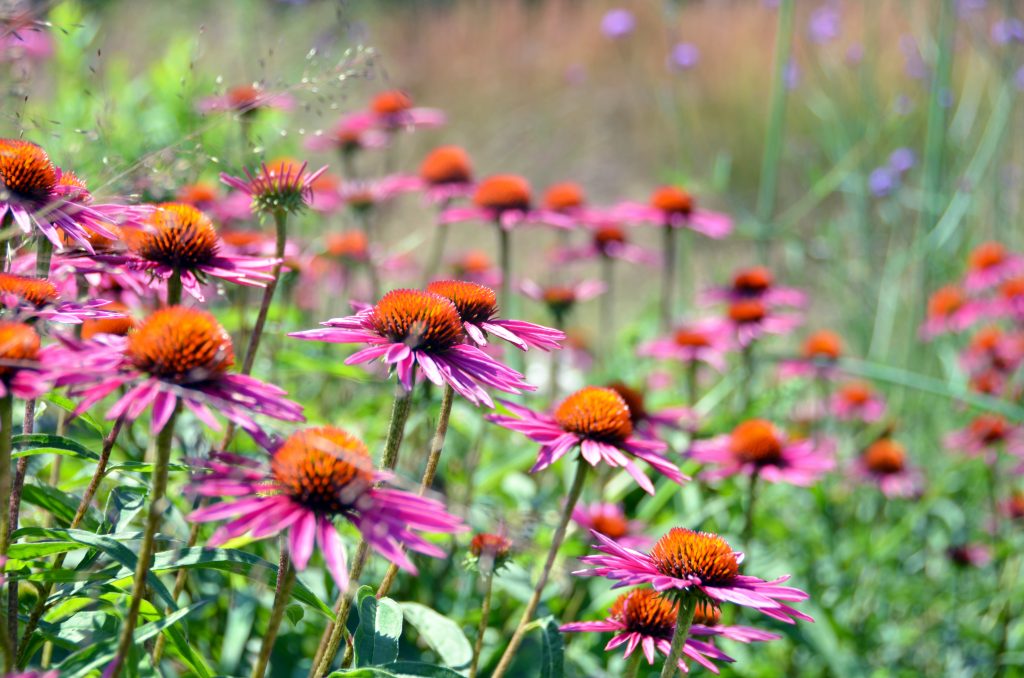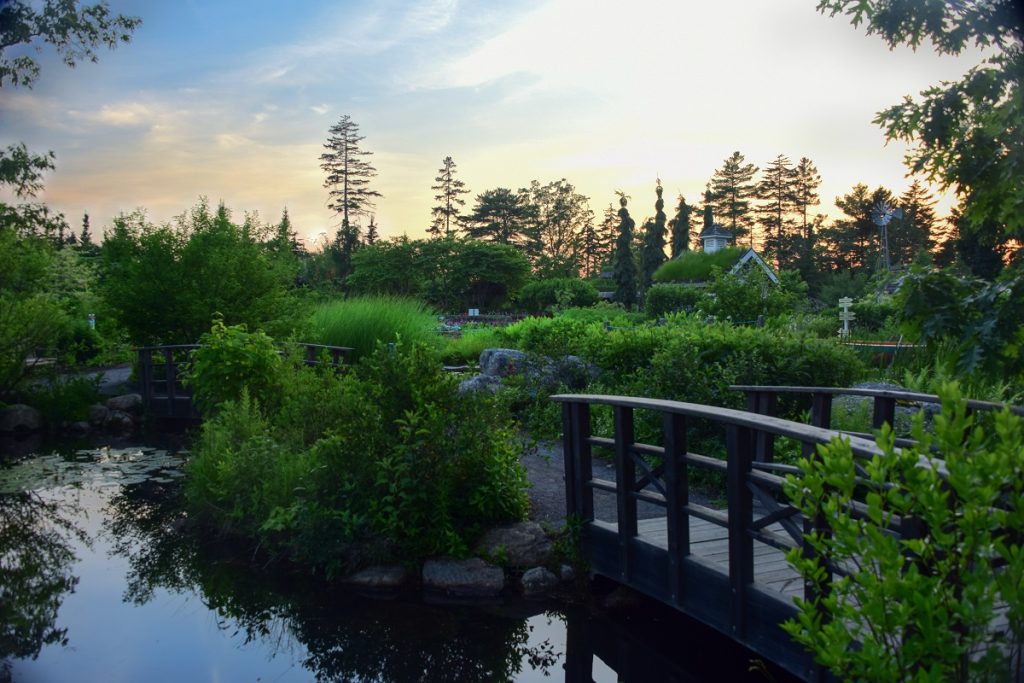If you’re here, you’re probably interested in plants (just a lucky guess…). And while we might be a dab hand at growing them, what about brainstorming unique ways of using them? So, with that in mind, let’s talk skincare.
The garden is the perfect place to turn because the truth of the matter is that our skin is one big absorptive organ, and it serves us well if much of what we spray, apply, or walk on is as natural as possible. So what options have we? Well, funnily enough, it’s a short commute—head to the kitchen. You probably have plenty of stuff in there already (or that can be purchased/ordered easily and cheaply) to make your own skincare apothecary.
- Rose Petals
 Most of us are probably familiar with how often roses are used in personal care products—as rose water, rose scented lotions and, of course, perfume. Indeed, rose petals are a wonderful tonic for the skin. A cooled infusion (tea) of rose petals can be used as an eye or mouthwash, due to the antiseptic characteristics of the rose. Add in the anti-inflammatory qualities and you’ve got a wonderful toner for skin troubled by rashes, irritation, or acne. Just spritz it on the skin after cleansing.
Most of us are probably familiar with how often roses are used in personal care products—as rose water, rose scented lotions and, of course, perfume. Indeed, rose petals are a wonderful tonic for the skin. A cooled infusion (tea) of rose petals can be used as an eye or mouthwash, due to the antiseptic characteristics of the rose. Add in the anti-inflammatory qualities and you’ve got a wonderful toner for skin troubled by rashes, irritation, or acne. Just spritz it on the skin after cleansing.
Rose is also a wonderful tonic for mature and aging skin, due to its vitamin C content and ability to rehydrate and soothe the skin. You can add a few drops of rose essential oil to the moisturizers you already use, or blend an ounce of jojoba oil (which is readily absorbed by the skin, as it so closely mimics the skin’s own sebum, or natural oil; it does not need to be refrigerated and has a long shelf life—and, best of all, there’s a local company out there producing it) with eight drops of rose essential oil. Smooth this on your face at night, or anytime skin feels tight and dry.
If you’re looking for a cleanser for dry skin, try the following: purchase rosewater or brew some rose petal tea (1tsp of herb per 6oz of water). Combine two tablespoons of rosewater or rose tea with two tablespoons of raw honey and 1/2 cup almond or jojoba oil. Massage a small amount into skin; rinse well with warm water and pat dry. This cleanser can be stored in your medicine cabinet, no need for refrigeration. If your skin still feels dry after cleansing, massage in a little more oil.
- Chamomile
Chamomile, known as an anxiety-soother, is another wonderful addition to your skincare regimen, especially if your skin is sensitive, mature, or irritated and chapped by the elements (or frequent hand-washing…). Apply cool chamomile tea to the skin as a toner (you can put this in a spray bottle and store in the fridge for up to four days). To help the skin recover from sun or windburn, try adding a few drops of chamomile essential oil to an ounce of jojoba oil. Apply sparingly as needed. Chamomile’s ability to ease inflammation, coupled with its ability to soothe the senses, helps calm body and the mind.
To cleanse combination skin, try brewing a strong cup of chamomile tea (two tsp. of loose herb or two teabags per 6oz of water, letting it steep 10 minutes). Blend this with one half cup of ground, whole grain oatmeal (grind them in a clean coffee grinder) and one tablespoon of raw (not pasteurized) honey (honey is a demulcent, which means it pulls moisture to the skin; it also fights acne and protects against damaging rays from the sun and regenerates skin, protecting against free radicals). Place a small amount of this in your palms and massage into skin. Rinse with warm water. Store the rest in the fridge–without preservatives, this cleanser won’t last long on the shelf. If parts of your skin feel tight after washing, try a little almond or jojoba oil massaged into dry areas.
Finally, you can also apply chamomile externally as a paste to help heal burns, skin ulcers, and eczema. To use, grind dried flowers with a (clean!) coffee grinder or a mortar and pestle, add some water and a bit of oatmeal (you don’t need to grind it for this recipe) until you’ve reached a desirable consistency. Keep the paste moist by covering the area with a warm, damp towel. Allow the affected area to rest for fifteen minutes or so, then bathe in cool water until the paste is dissolved. Repeat as often as necessary.
- Calendula (Calendula officinalis)
Calendula is the darling of an herbal skincare apothecary. It’s helpful for dry skin, acne-prone skin, aging skin, and holds its own as a wound and bruise remedy. For an all-around skin care and healing product, soak one part dried blossoms in two parts oil (olive, almond, avocado, or jojoba are all good choices—whatever you have on hand). Store in a warm, dark place for two weeks, shaking the jar occasionally. Strain and add a bit of vitamin E as a preservative (you can just puncture two vitamin E capsules and squeeze the contents into the oil).
This oil can be used on anyone for anything; use it on a baby’s skin to ease diaper rash and dry skin (test a small patch first for sensitivity, of course, and don’t use on broken skin), use on yourself to treat acne, scars, healing wounds, rashes, eczema, and dry skin. Have sensitive skin? Calendula is soothing and cooling for any skin type.
For oily, acne-prone skin, try this cleanser: combine 3/4 cup strong calendula tea (follow guidelines for chamomile tea, above), 1/4 cup lemon juice (fresh, if possible), 2tbs baking soda, 1tbs aloe vera gel (check the ingredients to make sure there’s no added alcohol, or choose a frond from your own plant). Blend ingredients together and apply with a clean, wet washcloth, gently massaging into face and neck. Leftover cleanser should be refrigerated. Aloe vera gel can be massaged into the skin if it feels tight. If you are very acne prone, drinking a cup or two of calendula and chamomile tea daily can aid your liver in the disposal of daily environmental baggage.
- Red clover (Trifolium pratense)
Red clover has long been used to help the overall condition and appearance of the skin and, because the herb is rich in antioxidants, in managing both UV damage and skin tone as we age. Red clover helps maintain and retain moisture, smoothness, and collagen levels. Used by herbalists to help treat psoriasis and eczema, red clover can not only relieve discomfort, but even help stimulate healing.
While you can use any of the methods outlined above with red clover, you can also add blossoms to your bathwater. (If, like me, you don’t have a bathtub, you can halve this recipe and use it as a foot soak.) To begin, brew a strong tea (3tbs. of herb per 8oz. water). Combine with 1 cup of Epsom salts (a natural source of magnesium, calming for the mind and body), ½ cup baking soda (wonderful for exfoliating the skin), and a few drops of essential oils of choice (optional).
Pour your brew into a warm bath, soaking for 20-30 minutes (any longer will be stimulating rather than relaxing) about an hour and a half before your regular bedtime. You’ll find the ritual, the warmth, and the scent of the herbs will help ease you into a sounder sleep.
As with anything new, allow a few weeks to adjust and settle into balance with your herbal skincare additions. In the meantime, relish in the idea that you are feeding your skin the food it needs.
~Amy Holt, Writer/Editor

